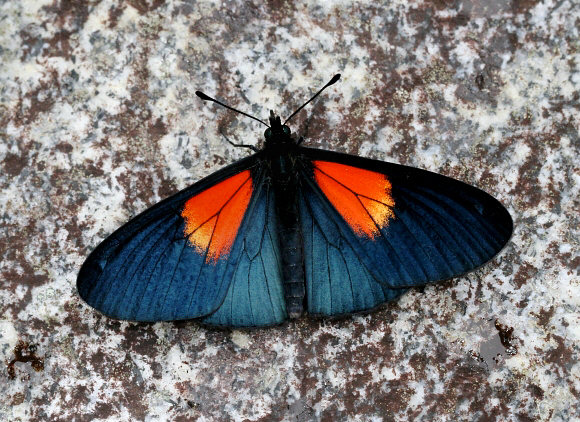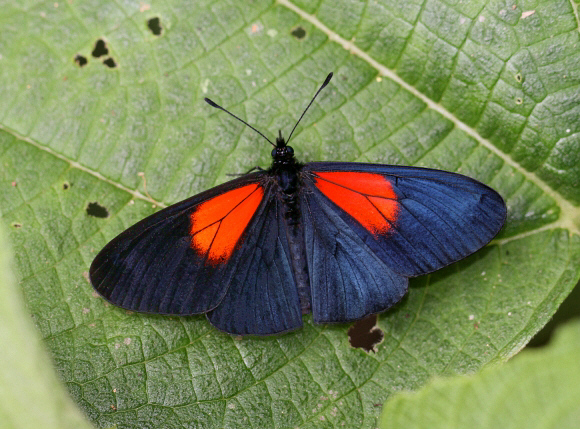
Introduction
The tribe Acraeini is primarily African – there are for example 83 species in Kenya, and about 230 in the whole African continent. There are also a few species in Asia, and an estimated 55 in the whole of the neotropical region.
In the neotropics the tribe is represented by 3 genera, most members of which have a pattern of red or orange-yellow bands on the forewings. The genus Actinote comprises of thinly scaled species whose wings have a translucent and shiny appearance. The other 2 genera Abananote and Altinote, are heavily scaled and boldly marked. Some workers consider Altinote, Abananote and Actinote to be subgenera of Acraea, although the latter are generally considered to be primarily Afro-Oriental.
Altinote have velvety black wings, banded with red, pink, orange or yellow. They are regarded as toxic models which form part of a complex Batesian / Mullerian mimicry ring involving Heliconius, Gnathotriche, Eresia, Castalia and various Ithomiine genera. Altinote characteristics include short straight black antennae with flattened clubs, and closed cells on the hindwings. The latter can most easily be seen from the underside.
Altinote ozomene can easily be recognised by the strong blue sheen and the red-yellow patches at the base of the forewings. There are 6 subspecies found variously from Mexico to Bolivia.
Habitats
This species occurs in cloudforest habitats at elevations between about 1200-1900m.
Lifecycle
I have no information specific to ozomene. The following generalisations are applicable to the genus Altinote: The eggs are yellowish and barrel-shaped. They are laid in batches of between 50-100 on the foodplants which according to species include Eupatorium, Vernonia, Mikania (Asteraceae) and Boehmeria, Mikania (Urticaceae). The caterpillars are typically dull greenish or brownish in colour. They are adorned on the back and sides with rows of short branched blackish spikes which in some species have mildly urticating properties. They live gregariously until the final instar. The pupae are whitish or pale yellow, marked with black spots or lines on the wing-pads and short black spikes on the abdomen. They are suspended from stems or foliage.

Adult behaviour
Males commonly bask on unsurfaced roads, where they imbibe dissolved minerals from the damp ground. They are inactive in dry sunny conditions, much prefering to fly in showery weather, and will often remain basking on the ground even during light rain.
